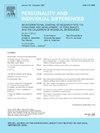Loneliness, personality, and attention to AI-generated images depicting social threat: An eye-tracking study
IF 2.6
2区 心理学
Q1 PSYCHOLOGY, SOCIAL
引用次数: 0
Abstract
Attention bias towards social threat has been linked to loneliness and anxiety, though findings are mixed and concerns about measurement reliability persist. This study examined whether state and trait loneliness, along with personality, self-esteem, social anxiety, and life satisfaction, are associated with attention bias towards social threat images (indicating rejection or exclusion) in young adults (N = 241). AI-generated images were used to enhance control over stimulus content and category distinctions. Participants completed an eye-tracking free-viewing task comprising 40 image matrices (four images per matrix, displayed for 6000 ms). We then computed attention bias (dwell time percentage, total fixation duration percentage, and fixation count percentage) and initial orientation of attention (first fixation percentage). The attention bias measures showed adequate-to-good internal consistency (α = 0.61–0.86). No significant associations emerged between loneliness and attention to socially threatening stimuli, suggesting that heightened vigilance to social threat may not be a feature of loneliness in non-clinical young adults. However, it was found that females exhibited greater attention to social positive images, and baseline pupil diameter was associated with social anxiety. Future research should assess whether loneliness-specific attention bias is a replicable phenomenon, ideally by using an extreme-sampling approach with very lonely individuals.
孤独、个性和对人工智能生成的描绘社会威胁的图像的关注:一项眼球追踪研究
对社会威胁的注意力偏向与孤独和焦虑有关,尽管研究结果好坏参半,而且对测量可靠性的担忧仍然存在。本研究考察了状态和特质孤独,以及人格、自尊、社交焦虑和生活满意度,是否与年轻人对社会威胁图像(表明拒绝或排斥)的注意偏差有关(N = 241)。使用人工智能生成的图像来增强对刺激内容和类别区分的控制。参与者完成了由40个图像矩阵组成的眼球追踪自由观看任务(每个矩阵4张图像,显示6000毫秒)。然后,我们计算了注意偏差(停留时间百分比、总注视时间百分比和注视次数百分比)和初始注意定向(第一次注视百分比)。注意偏倚测量结果显示内部一致性(α = 0.61-0.86)。孤独和对社会威胁刺激的注意之间没有明显的联系,这表明对社会威胁的高度警惕可能不是非临床年轻人孤独的特征。然而,研究发现,女性对社会积极形象表现出更大的关注,并且基线瞳孔直径与社交焦虑有关。未来的研究应该评估孤独特异性注意偏差是否是一种可复制的现象,最好是对非常孤独的个体使用极端抽样方法。
本文章由计算机程序翻译,如有差异,请以英文原文为准。
求助全文
约1分钟内获得全文
求助全文
来源期刊

Personality and Individual Differences
PSYCHOLOGY, SOCIAL-
CiteScore
8.50
自引率
4.70%
发文量
577
审稿时长
41 days
期刊介绍:
Personality and Individual Differences is devoted to the publication of articles (experimental, theoretical, review) which aim to integrate as far as possible the major factors of personality with empirical paradigms from experimental, physiological, animal, clinical, educational, criminological or industrial psychology or to seek an explanation for the causes and major determinants of individual differences in concepts derived from these disciplines. The editors are concerned with both genetic and environmental causes, and they are particularly interested in possible interaction effects.
 求助内容:
求助内容: 应助结果提醒方式:
应助结果提醒方式:


